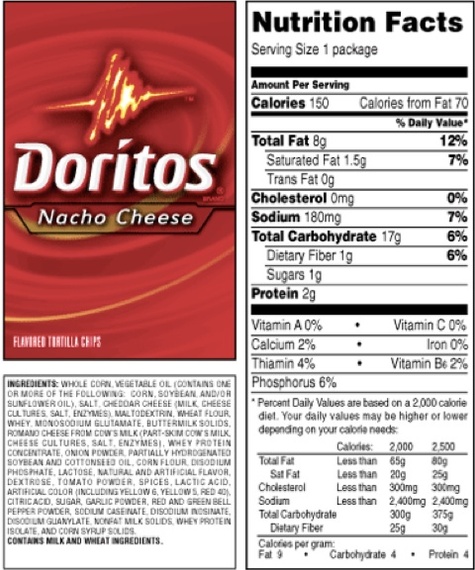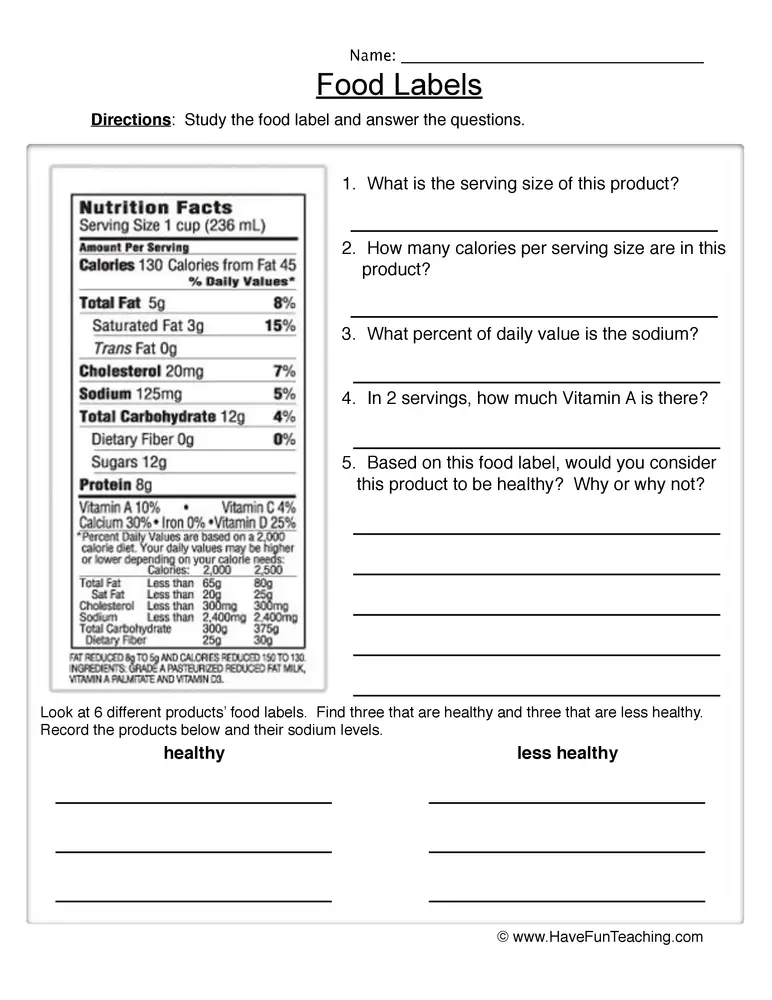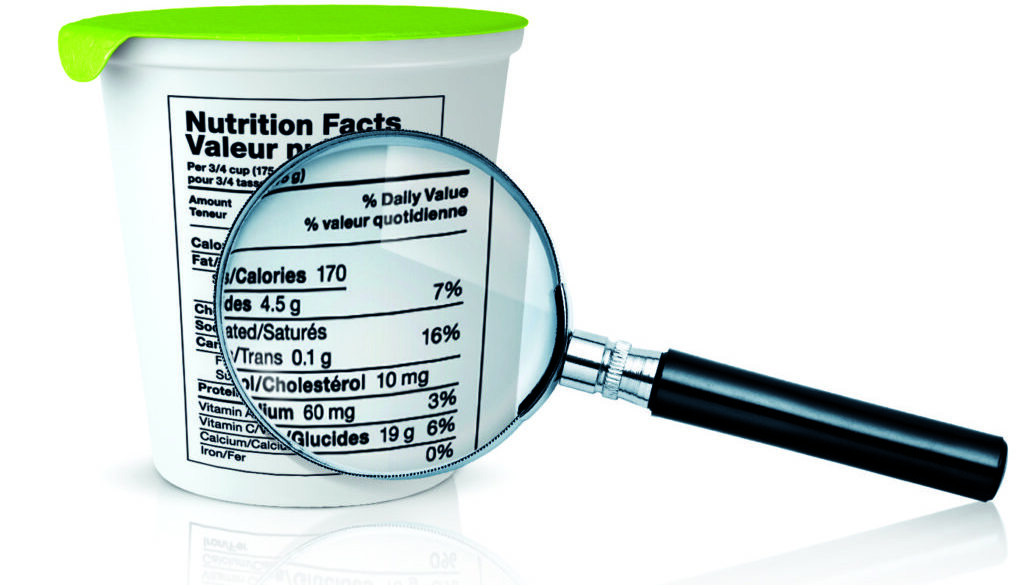41 reading nutrition labels australia
nutritionaustralia.org › category › fact-sheetsCategory: Fact Sheets | Nutrition Australia In addition to our general resources and information, our divisions offer specific resources and programs in each state for particular interest areas including early early years, OSHC, schools and aged care. › salt-sodium-conversionHow to Convert Salt to Sodium | Ideal Nutrition Aug 02, 2021 · There are plenty of reasons that it could be useful to know the conversion. And obviously, if you are reading this post you have a reason for doing so. Personally, I think in Australia, the main reason I think it is useful is for when adding salt to food. All our labels only list sodium.
› consumer › labellingLabelling poster - how to read food labels Nutrition and health claims. Nutrition content claims are claims about the content of certain nutrients or substances in a food (e.g. contains calcium). Health claims refer to a relationship between a food and health. There are rules for when nutrition content or health claims are made on food labels.
Reading nutrition labels australia
Reading food labels | Heart Foundation Understanding the Nutrition Information Panel, or food label, on packaged foods can be hard. Discover how to make sense of it all now. Food Labels: How to Read Nutrition Labels | New Idea Food Nutritional information. Aside from the ingredients list the nutritional information on packaged foods can help you make an informed decision. Firstly, use the per 100g column on food as serving size is not always a good depiction of your intake. As a rough guide Chloe recommends: Sodium/Salt: <120mg/100g for low salt or <400mg/100g for moderate. Understanding food labels: How to read Australian nutritional panels Under FSANZ rules, these labels must reveal how much of the following is in the product: Energy (in kilojoules or both kilojoules and calories) Protein; Fat; Saturated fat; Carbohydrates; Sugars; Sodium (salt) These contents must show average amount per 100g (or 100ml for liquids) and per serving. A breakdown of what's on nutrition labels. Energy or kilojoules
Reading nutrition labels australia. How to read food labels in Australia: Find nasties and real nutritional ... There is very little protein at 1.8g per 100g, and 89.4g of carbohydrates. The important thing to note is how much sugar the product contains. In this product there is 25.1g of sugar per 100g, which means that much of the carbohydrate content comes from sugar. When it comes to sugar, aim for products with less than 5g and no more than 10g per 100g. PDF Food label reading guide - Nutrition Australia Food label reading guide 3 minute read | Produced: 2016 | Revised: August 2021 Key points: • Reading food labels can help us make healthy choices. • Always read the per 100g column on the nutrition information panel (NIP) to compare similar products, as the serve sizes can differ between brands. • Always compare the nutrition information panel (NIP) or health star rating of similar › how-to-read-food-labelsHow to read food labels | healthdirect In Australia, the law requires all manufactured foods to carry labels containing safety and nutrition information. This information helps you to make decisions about the food you buy and eat so you can follow a healthy diet. The label will tell you: the name of the product, describing accurately what it is the brand name Tooth Smart - Reading Food and Drink Labels - Ministry of Health A poster in the Tooth Smart series that assists parents and carers in reading levels of sugar on food and drink labels. Text alternative. For an accessible version of the PDF, visit Text alternative: Tooth Smart - Reading food and drink labels.
Food label reading guide | Nutrition Australia What to look for when reading food and drink labels (per 100g) Health Star Ratings The Health Star Rating is a front of pack labelling scheme which can be used to make healthier food choices at a glance. The rating range is from ½ - 5 stars and the more stars, the healthier the choice. Recommended minimum star ratings for food and drink categories Labelling - Food Standards The Code also includes specific labelling and information requirements that apply to certain food products only (Chapter 2 of the Code). In addition to the Food Standards Code, all representations made about food are subject to fair trading laws and food laws in Australia and New Zealand which prohibit false, misleading or deceptive ... Nutrition labels: how to read them - Heart Research Institute The nutrition information panel is a table that tells you how much energy, protein, fats, carbohydrates, sugars and other nutrients the food contains. The key to interpreting a label is to not focus too much on an individual nutrient and neglect other aspects of the food. You need to assess the nutrients in the context of the whole food and ... How to read nutrition labels 101 | healthylife How to read nutrition labels 23 September 2021 | 2 min read Key points Pay attention to the serving sizes listed on the label. Convert the numbers on the label to percentages. Learn how to translate calories to kilojoules. Understand what 'daily recommendation' means. Be aware of any redundant claims.
How to Read Food Nutrition Labels | nib The average adult should consume 25-30g of fibre every day and when you're looking at your nutrition label, aim for 7.5g per 100g (or more)! Sodium Sodium is just a fancy (aka scientific) way of saying 'salt' and although it can make things taste delicious, you can have too much of a good thing. How to read a label | NSW Food Authority How to read a label Nearly every food product requires a label with specific information that tells us what's in it, how to handle it, and where it has come from, to help us make healthy and safe food choices. See Labels & the law for a list of everything that should be included on a food label. Ingredients & Nutrition How to read food labels | New Idea Magazine Food identification. Food labels must show the name of the food, the business address and the lot identification of the food. The FSANZ states that brands need to ensure the food's name or description reflects its true nature. For example, if a strawberry yoghurt contains strawberry flavouring rather than real fruit, it needs to be called ... PDF Reading food labels - Queensland Health Reading food labels . Understanding how to read food labels can help you make healthy food choices. Food Standards Australia and New Zealand (FSANZ) regulates food labelling in Australia. Most packaged food and drink must have a nutrition information panel. Exceptions include those in very small packages, some baked products and take-away food. 100g.
PDF how to understand food labels - Eat For Health Not all labels include fibre. Choose breads and cereals with 3g or more per serve Nutrition Information Servings per package - 16 Serving size - 30g (2/3 cup) Per serve Per 100g Energy 432kJ 1441kJ Protein 2.8g 9.3g Fat Total 0.4g 1.2g Saturated 0.1g 0.3g Carbohydrate Total 18.9g 62.9g Sugars 3.5g 11.8g Fibre 6.4g 21.2g Sodium 65mg 215mg
Food labels: a guide to reading nutrition labels - MyDr.com.au Solid foods labelled as 'low-fat' must not contain more than 3 grams of fat per 100 gram; 'low-fat' liquid foods must not contain more than 1.5 grams of fat per 100 mL. Only foods that are low fat can use a fat-free claim. Labels can therefore only claim that a food is 97%, 98% or 99% fat free. 'Low cholesterol'
Label reading - Baker Label reading This fact sheet gives you guidance on understanding how to read nutrition information panels to help you identify healthy choices. This fact sheet will allow you to identify processed and packaged foods that are: lower in energy (kJ) lower in saturated and trans fat lower in sugar lower in sodium (salt) higher in dietary fibre.
Reading and understanding food labels - Cancer Council Western Australia Health Star Rating. The Health Star Rating is a voluntary front-of-pack labelling system used in Australia and New Zealand. Its purpose is to provide at-a-glance nutrition information to help people compare similar packaged food products. Health Star Ratings range from 1/2 a star to 5 stars. These ratings can appear on packs in two ways.
How to Read Food Labels & Understand Nutrition Info Panel | Better ... Nutrition Australia states that 460-920g daily value of sodium is adequate for our health. That equates to 1.15-2.3g of salt per day. Excess salt consumption raises your blood pressure and hypertension is associated with a higher risk of stroke and heart disease. Keeping your intake to 4g of sodium per day or less is key.
› - › mediaLabel reading fact sheet | Baker Institute Health star ratings are based on energy (kJ), saturated fat, sodium and sugar content. A higher star rating may reflect higher dietary fibre, protein, fruit, vegetable, legume and nut content. There are different criteria for different food groups. The rating does not include glycemic index (GI).
Nutrition Packaging and Custom Nutrition Label | Read Label We provide customized nutrition product labeling and packaging. Call: 03 9397 0355 Request a Quote Call: 03 9397 0355. Our Range Labels; Stand Up Pouches ... Working with Read Labels & Packaging for your nutrition packaging and labelling requirements ensures your business has the ability to work closely with us to determine the correct flexible ...
Label Reading guide - Access Health & Community Label Reading guide. This is a Baker Heart and Diabetes Institute guide about label reading. Understanding how to read nutrition information will help you identify healthy choices. This guide is most suitable for processed and packaged foods such as breakfast cereals and biscuits. Download the Baker Label Reading guide (PDF, 427 KB)
Understanding food labels fact sheet - NDSS Food labels will typically include a nutrition information panel, list of ingredients, the 'use by' or 'best before' date and identify potential food allergens and additives. Food labels also tell you the amount of carbohydrates (carbs) you eat and drink. This can help you manage your blood glucose levels.
Reading food labels to avoid food allergies and intolerances Reading food labels to avoid food allergies and intolerances In Australia all packaged foods must include a food label. Food labelling is governed by Food Standards Australia New Zealand (FSANZ). Nutrition information is found in two places on a food label: the ingredient list and the nutrition information panel. Sample food label
How to understand food labels - Eat For Health The Nutrition Information Panel on a food label offers the simplest and easiest way to choose foods with less saturated fat, salt (sodium), added sugars and kilojoules, and more fibre. It can also be used to decide how large one serve of a food group choice or discretionary food would be and whether it's worth the kilojoules.
Nutrition information panels - Food Standards Nutrition information panels (NIP) on food labels provide information on the average quantity of energy in kilojoules or in kilojoules and kilocalories and these nutrients: protein; fat; saturated fat; carbohydrate; sugars; sodium - a component of salt. A NIP will include information about other nutrients if a claim is made.
Reading food labels & nutrition panel - Diabetes Queensland Reading food labels When choosing packaged food, choose products with: lower energy (kilojoules) if you are trying to lose weight lower total and saturated fat lower sugar lower sodium higher fibre Every food label tells a story and the Nutrition Information Panel simply gives you the facts.
How to read a food label - Healthy Kids Food & nutrition. Our nutrition philosophy; Nutrients in food. Energy (kilojoules) Carbohydrates; Protein; Fat; Fibre & whole grains; Calcium; Sodium/Salt; Vitamins & minerals; 5 Food Groups. Fruit; Vegetables; Dairy; Grains, breads & cereals; Meat, poultry, fish, eggs & more; Drinks. Why Water? Milk; Sports drinks; Caffeine & energy drinks; Soft drinks & diet soft drinks
› pmc › articlesThe Effects of Nutrition Knowledge on Food Label Use: A ... Sep 01, 2015 · This suggests that frequent use of nutrition labels does not promote understanding of trans fat levels. Barreiro-Hurle et al. (2008) examined food choice based on food label characteristics including nutrition labels and claims. They found that nutrition knowledge was higher among those who primarily used nutrition labels, relative to those who ...












Post a Comment for "41 reading nutrition labels australia"